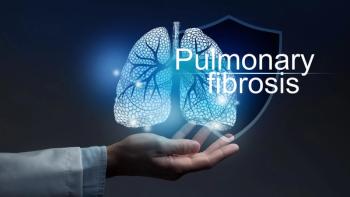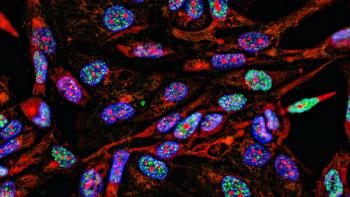
PTSM: Pharmaceutical Technology Sourcing and Management
- PTSM: Pharmaceutical Technology Sourcing and Management-02-06-2013
- Volume 9
- Issue 2
Pharma Companies Increase R&D for Neglected Tropical Disease
Pharma companies intensify R&D efforts to address treatments for neglected tropical diseases in the developing world.
The International Federation of Pharmaceutical Manufacturers & Associations (IFPMA) released its 2012 status report on pharmaceutical R&D to address neglected diseases that disproportionately affect people in low- and middle- income countries. Representing a 40% increase over 2011, the 132 R&D projects in the 2012 update focus on the following diseases prioritized by the World Health Organization's (WHO) Special Program for Research and Training in Tropical Diseases (TDR): tuberculosis, malaria, human African trypanosomiasis (sleeping sickness), leishmaniasis, dengue, onchocerciasis (river blindness), American trypanosomiasis (Chagas disease), schistosomiasis, leprosy, and lymphatic filariasis.
"We take a comprehensive approach to tacking neglected diseases," said IFPMA Director General Eduardo Pisani, in a Jan. 14, 2013 press release. "Donations of 14 billion treatments this decade address patients’ near-term needs while these 132 R&D programs will bring innovative vaccines and treatments to meet future needs and hopefully stop these dreaded diseases."
Of the 132 R&D projects listed in the IFPMA status report, 112 (85%) are product-development partnerships (PDPs) while the remaining 20 (15%) projects are company-only undertakings. As part of the 2012 London Declaration on Neglected Diseases, the research-based pharmaceutical industry pledged continued R&D and donations of 14 billion treatments by 2020 to control or eliminate nine neglected diseases. . The number of medicine and vaccine R&D projects has increased by more than 40%, from 93 in 2011 to 132 in 2012, according to the IFPMA report.
The IFPMA report points to data from the fifth annual G-FINDER report “Neglected Disease R&D: A Five-Year Review,” which shows total R&D funding for neglected diseases as $3.05 billion in 2011. The public sector provides nearly two-thirds ($1.9 billion, 64%) of global funding for R&D followed by the philanthropic sector contributions ($570.6 million, 18.7%) and the pharmaceutical industry ($525.1 million, 17.2%). In 2011, the largest sectoral increase came from the pharmaceutical industry which rose by $20 million (+ 4.2%). In terms of five-year trends, both public and philanthropic sector funding have dropped since the global financial crisisalthough both still reached higher levels in 2011 than in 2007. Meanwhile, multinational pharmaceutical company investment increased by $193.6 million since 2008.
In January 2013, WHO issued a report to provide and update on the status of 17 neglected tropical diseases. The publication charts progress in controlling, eliminating and eradicating these diseases. Two are targeted for global eradication, dracunculiasis (guinea worm disease) in 2015 and yaws in 2020. The report outlines six targets set for the elimination of five diseases in 2015 and a further 10 targets for nine diseases for 2020, either globally or in selected geographical areas.
“With this new phase in the control of these diseases, we are moving ahead towards achieving universal health coverage with essential interventions,” says WHO Director-General Margaret Chan, in a Jan. 16, 2013 WHO press release. “The challenge now is to strengthen capacity of national disease programs in endemic countries and streamline supply chains to get the drugs to the people who need them, when they need them.”
WHO reported that donation of medicines and funding through an alignment of international partners have helped fast-track actions and initiatives that are now having a measurable impact in affected countries with considerable scale-up of preventive chemotherapy interventions. This involves the widespread delivery of safe, single-dose, quality-assured medicines as preventive treatment against five helminthiases and trachoma (chlamydial infection). In 2010, 711 million people received treatment for at least one of the four diseases (lymphatic filariasis, onchocerciasis, schistosomiasis and soil-transmitted helminthiases) targeted for preventive chemotherapy, which involves the widespread delivery of safe, single-dose, quality-assured medicines as preventive treatment.
During the next five years, WHO projects that treatment for schistosomiasis (bilharzia) will reach 235 million people. This will be achieved by increasing availability of medicines by using donated medicines and improved distribution at a country level. WHO also reports that a reduction in reported cases of dracunculiasis (guinea-worm disease) with only 521 cases between January and September 2012 compared with 1006 confirmed cases for the same period in 2011 and of human African trypanosomiasis (sleeping sickness) to less than 7000 in 2011 from a high of 30 000 annual cases at the turn of the century.
Rabies has been eliminated in several countries, with WHO eyeing regional elimination of this preventable disease by 2020. A new strategy, which involves the early detection and use of antibiotics to treat Buruli ulcer, has drastically reduced suffering and disability from this chronic and debilitating skin condition. An evaluation of WHO’s new strategy, which aims at eradicating yaws by 2020 using a new oral antibiotic treatment designed to replace those developed in the 1950s (which mainly centered on delivering injections of benzathine benzylpenicillin).In 2012, dengue ranked as the fastest spreading vector-borne viral disease, with an epidemic potential in the world, registering a 30-fold increase in disease incidence during the past 50 years. The WHO report cites sustainable preventive measures as a key for addressing this area.
Articles in this issue
almost 13 years ago
Offshoring Biomanufacturingalmost 13 years ago
Cautious Times for Fine-Chemical Producers and Contract API Manufacturersalmost 13 years ago
Advances in Nanotechnology-Based Drug Deliveryalmost 13 years ago
CSR and Sustainability in the Newsalmost 13 years ago
Optimizing Facilities Management in the Pharma IndustryNewsletter
Get the essential updates shaping the future of pharma manufacturing and compliance—subscribe today to Pharmaceutical Technology and never miss a breakthrough.





